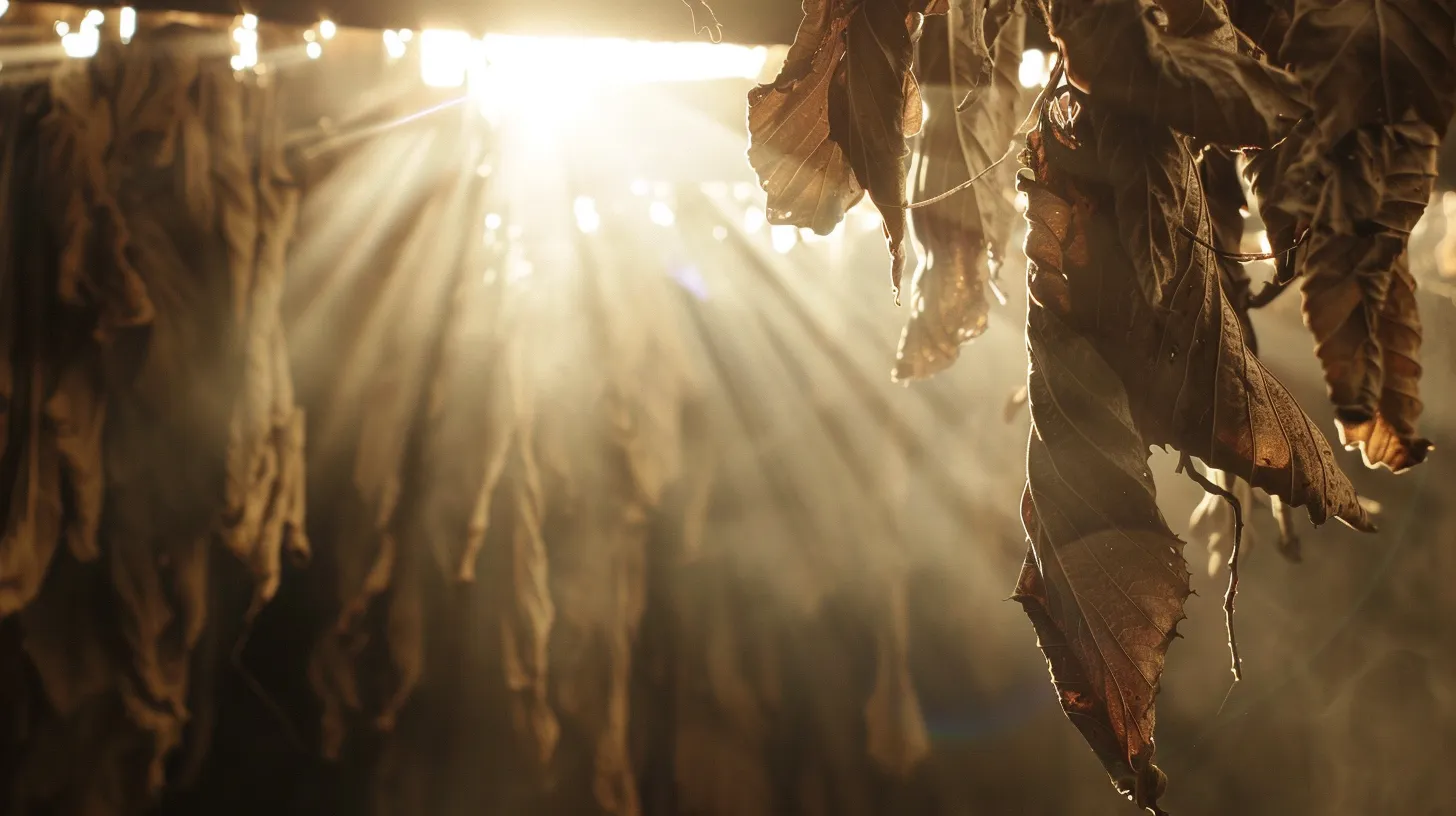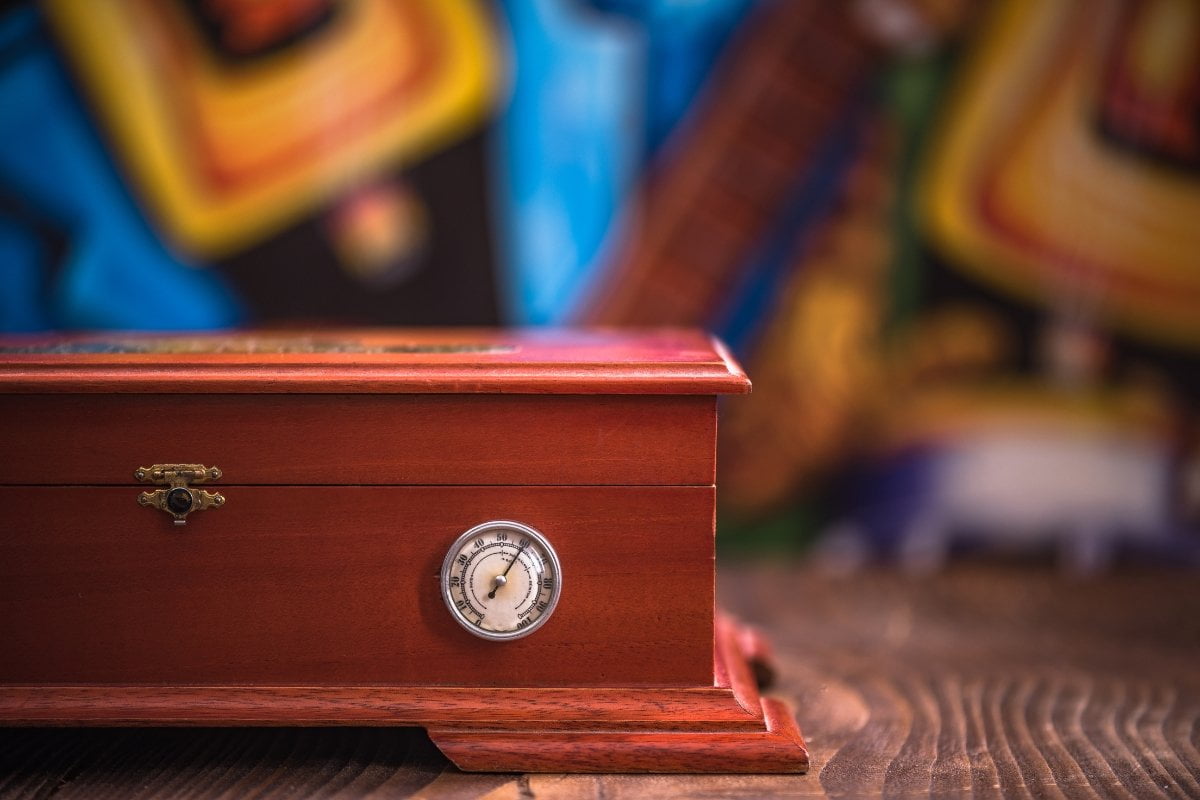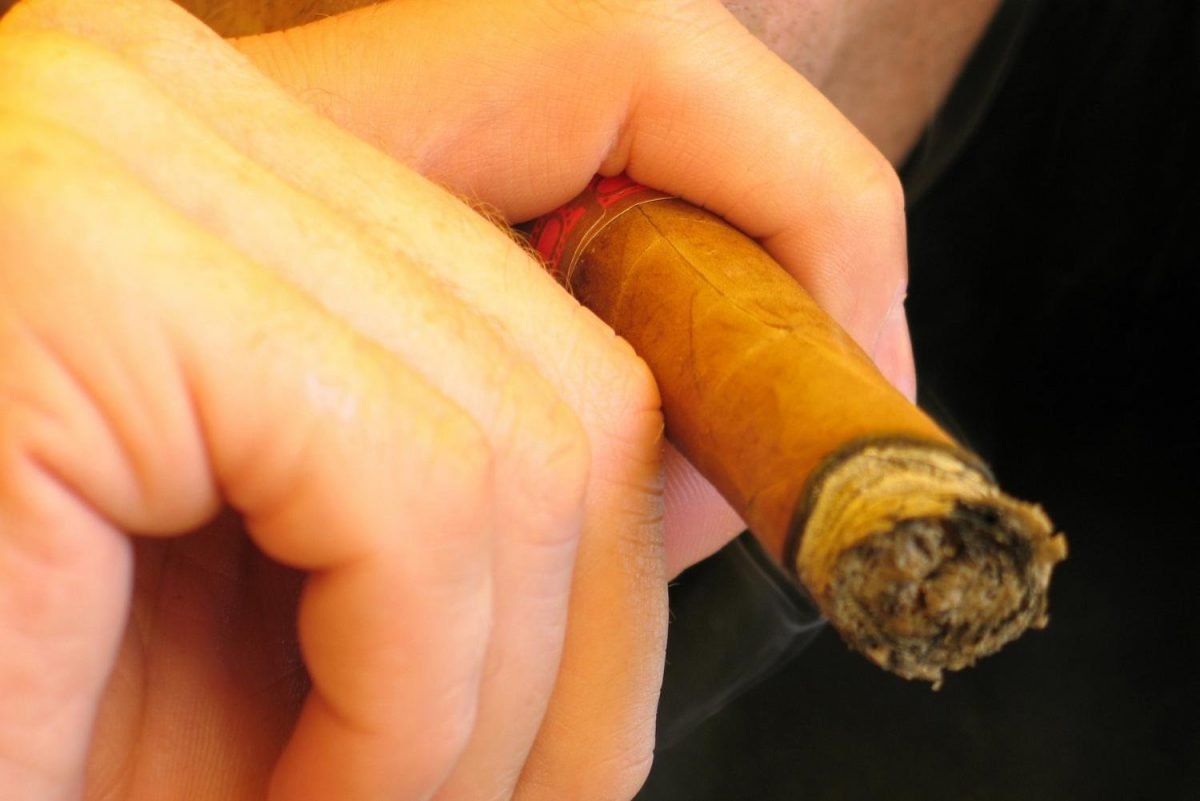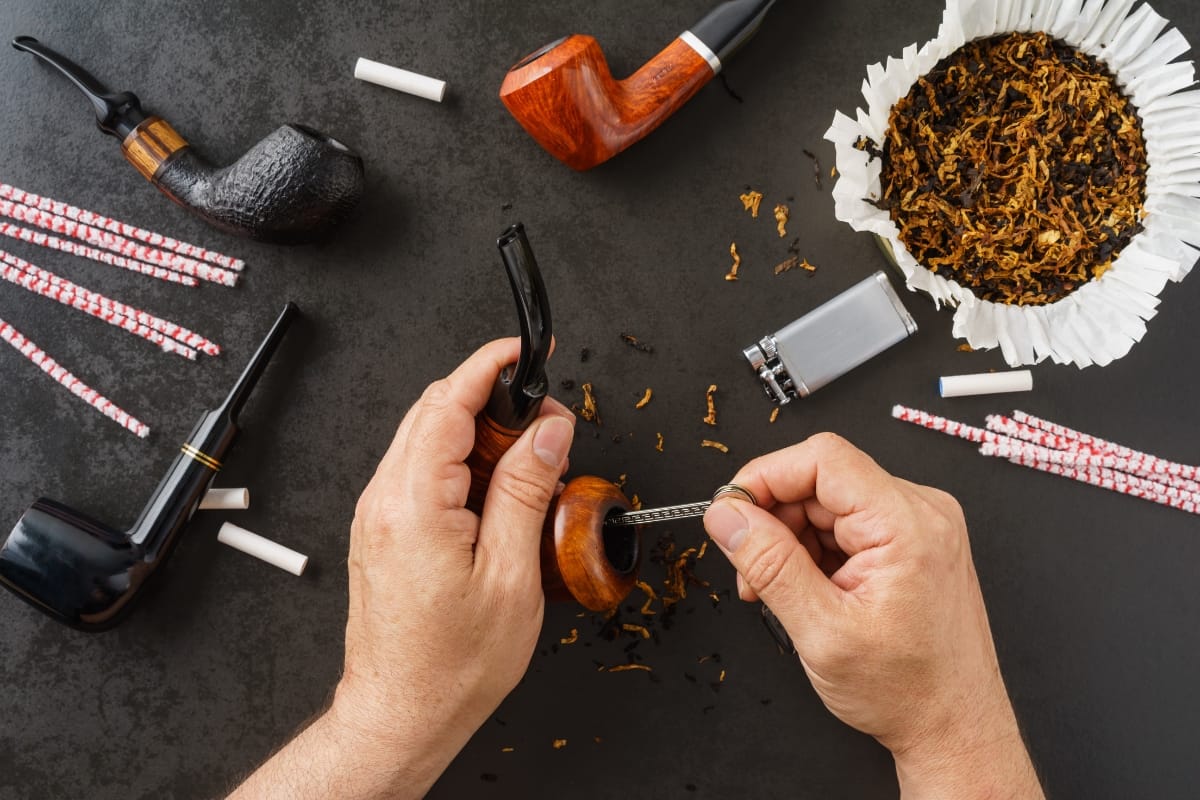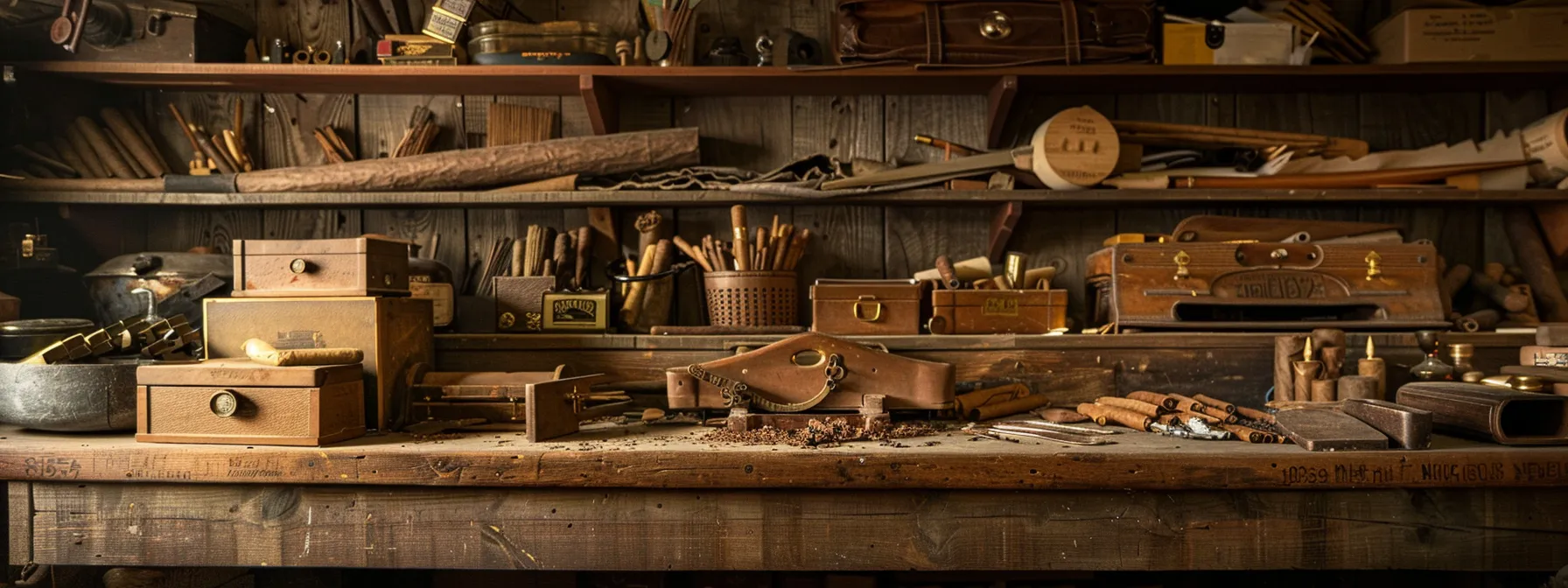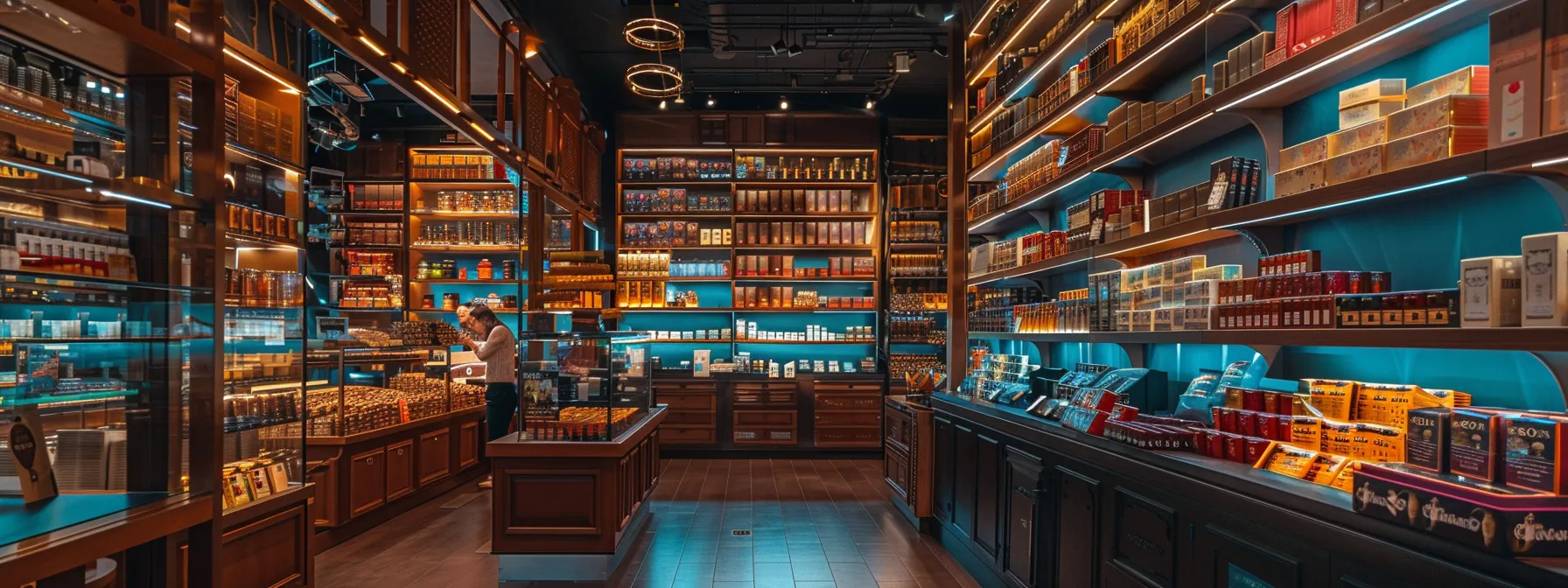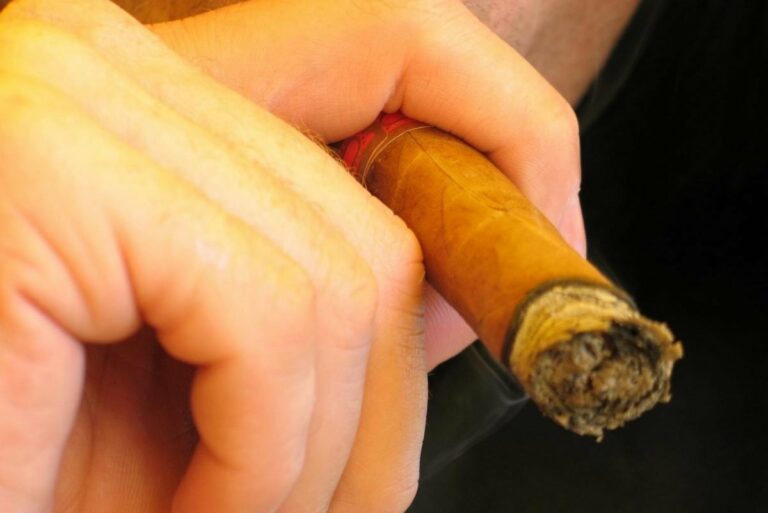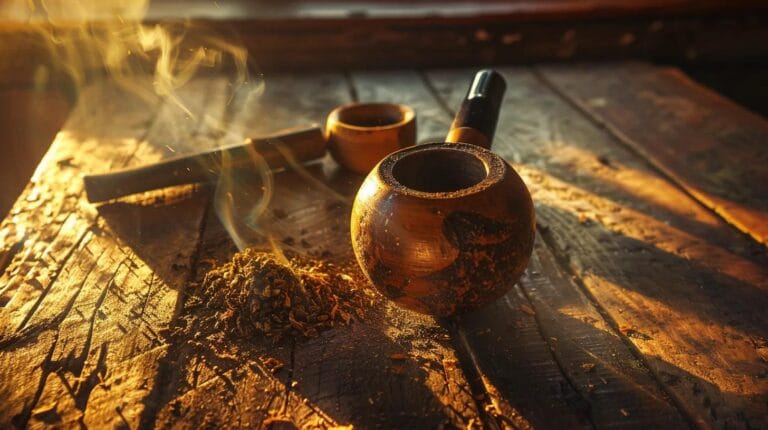Ever wonder how a humble tobacco leaf evolved into the distinguished cigars you enjoy today? This post will embark on a rich journey from the sacred origins of tobacco in ancient civilizations to the bustling cigar factories of modern times.
You’ll delve into the transformation from artisanal handcrafting in Cuba and the Dominican Republic to the modern-day culture that cherishes each puff. Discover how the cigar legacy has been preserved and is still vibrant today.
Whether you’re selecting a lighter, contemplating the slow burn in your ashtray, or seeking connection with fellow aficionados, you’ll find answers and appreciation in the untold history of cigars.
Explore Cigar Heritage: The Timeless Tradition of Craftsmanship
Table of Contents
The Ancient Beginnings of Tobacco: From Sacred Rituals to Trade Commodity
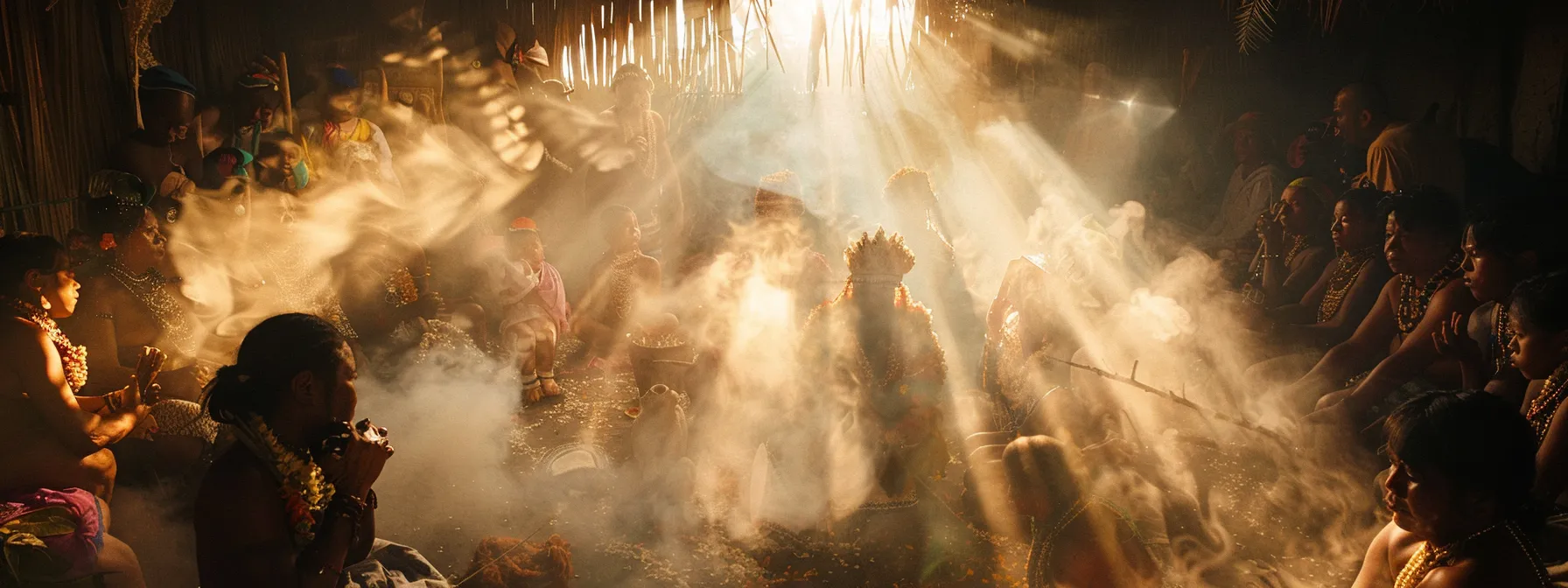
Let’s journey back to when tobacco was a symbol of sanctity within indigenous cultures before it caught the curiosity of Europeans.
Indigenous Cultures and the Sacred Use of Tobacco
Long before the sleek boutiques or the perfect humidity control of a modern humidor, indigenous folks held tobacco as a holy element.
They’d gather around a communal cart, with carefully wrapped leaves, and engage in ceremonies that were thought to bridge the natural and spiritual realms. For them, tobacco wasn’t just a plant; it was a gift to be offered, shared, and revered.
This reverence was not confined to a single geography, echoing from the valleys of Cleveland to the coastal lowlands of South America. As was the custom, tribes would present tobacco in exchanges, signifying peace and unity, or employ its smoke in medicinal and ritualistic practices.
| Culture | Use of Tobacco | Modern-Day Parallel |
|---|---|---|
| Native American | Sacred Rituals | Ceremonial Cigars |
| South American Tribes | Medicinal Healing | Aromatherapy & Relaxation |
Tobacco’s Introduction to Europeans
When you think about tobacco’s jump across the ocean, it’s fascinating to consider how Europeans first reacted to the exotic smoke.
Discovery of the New World wasn’t just about new lands; it introduced treasure-like commodities to the European market, with tobacco quickly stashed in the holds alongside gold and spices.
Sailors and traders, once strangers to the nicotine-kissed leaves, soon had their ships brimming with what would become a staple in European stock, unknowingly setting the stage for modern-day giants like Gurkha cigars.
Picture the scene along the Jersey shoreline, as the first barrels of tobacco were unloaded, exuding an air of mystery and allure. Not long after, the simple act of enjoying tobacco smoke evolved swiftly, with the introduction of butane lighters making the experience easier and more refined.
The Global Spread of Tobacco Cultivation
Believe it or not, the green hills of Connecticut are integral to the story of tobacco’s spread. After tobacco took Europe by storm, entrepreneurs spotted the opportunity for cultivation in new lands. You’ve probably seen or even smoked a Cohiba with that smooth Connecticut Shade wrapper, right?
This innovation in growing tobacco under cloth to achieve a desirable, mild flavor soon became a staple in cigar manufacturing, with Connecticut Shade being synonymous with quality in the cigar world.
Just like the thrill of discovering a new cigar retailer, enthusiasts who uncover these historical connections experience a deeper appreciation for the cigars they enjoy and the journey the tobacco leaf has taken.
The Birth of the Cigar: Origins and Early Production
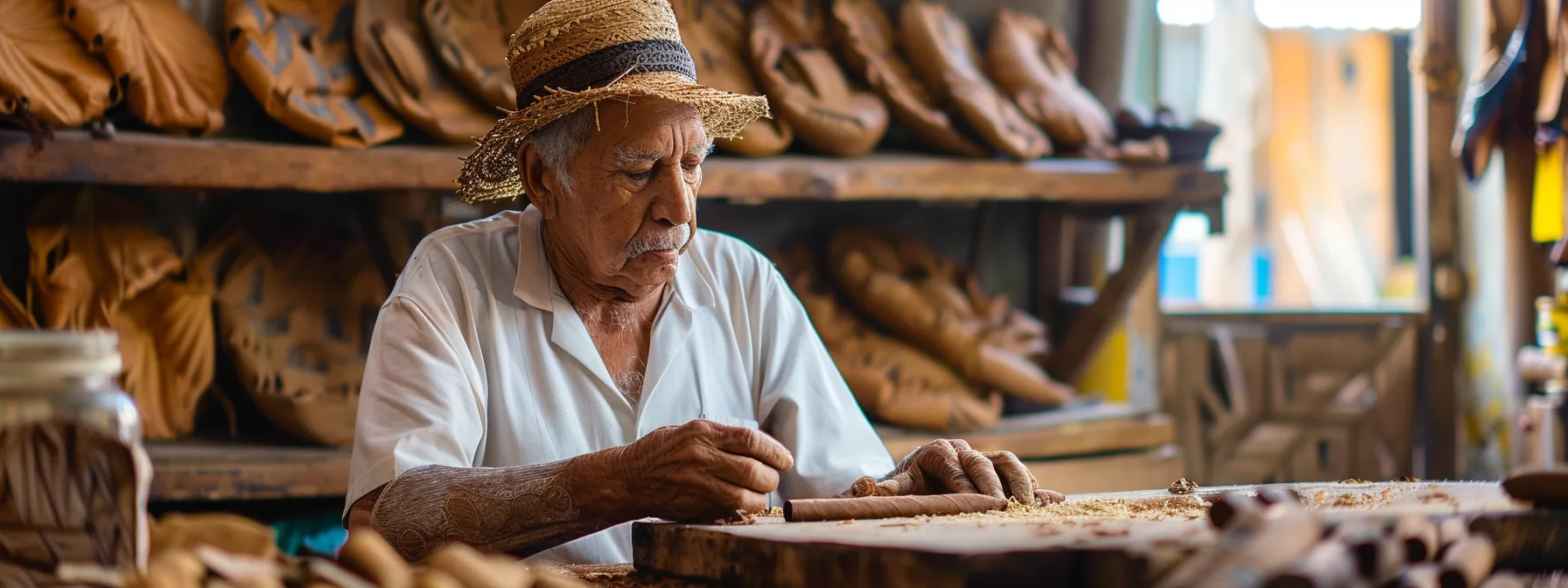
As you trace the aromatic story of cigar heritage, it leads us to the balmy shores and fertile soils of the Caribbean, where the craft of cigar making began to flourish.
Influenced by Spanish mastery in Havana, and buoyed by the vigor of Cuban tobacco plantations, the development of luxury cigars picked up pace, their scents and flavors as rich as leather.
Whether rolled delicately in Mexico, housed in Georgia, or venturing through Pennsylvania trade routes, each step in the cigar’s progress is a chapter in a story that’s as compelling as it is fragrant. Up next, learn how these facets interwove to establish a legacy you still relish with every puff.
Development of Cigar Making in the Caribbean
Caribbean shores, with their vast plantations and maritime commerce, set the stage for the rise of the cigar industry. As you indulge in the tastes of Premium Cigars of Georgia, you’re savoring flavors perfected over centuries in factories where the air is thick with spice and the hands are skilled in the art of rolling leaves into sheer luxury.
Consider the California aficionado, seeking that perfect blend that resonates with the palate; this quest echoes the meticulous process in Caribbean factories where the quality of each leaf is critical to crafting a cigar that delivers more than a smoke—it offers an experience.
Each draw you take connects you to these lands where choice leaves yield spice-laden aromas and exemplary hand-rolled cigars.
- Caribbean plantations cultivate the coveted leaf.
- Factory artisans roll spices and passion into every cigar.
- Premium Cigars of Georgia carries on the tradition with finesse.
Spanish Influence on Cigar Craftsmanship
As you explore the art of cigar making, it’s hard to overlook the influence of Spanish craftsmanship that brought precision and elegance to the process.
When Spanish artisans touched tobacco, they weren’t just crafting cigars; they were creating a language of luxury. Walk into our shop, and you’ll see how that influence lives on. The meticulous selection of leaves, the careful blend of flavors – these traditions inform the array of cigar brands and accessories you find on our shelves.
And it’s this same sophistication you’ll come to appreciate as you delve deeper through our blog or reach out through the contact us page for advice on your next purchase.
Spanish cigar-making techniques ensured that each cigar goes beyond mere smoking; it becomes an experience, a ritual steeped in history. Let these practices guide you as you select not just a cigar, but a narrative, one that enriches the tapestry of your smoking tradition.
Establishing Early Cigar Trade Routes
As these rich, hand-rolled treasures were shaped by Cuban mastery, merchants saw a chance to spread the wealth.
They harnessed the winds and currents, embarking on journeys to deliver the alluring aroma of Cuban cigars to eager markets abroad. These early trade routes blossomed into what you now recognize as a global industry, connecting cigar enthusiasts from the sultry streets of Havana to the quaint shops in America.
Back then, every crate arriving from Caribbean shores sparked a buzz among smokers, much like the excitement you feel when exploring new cigar arrivals today.
Cigar Culture in the 19th Century: Symbolism and Status
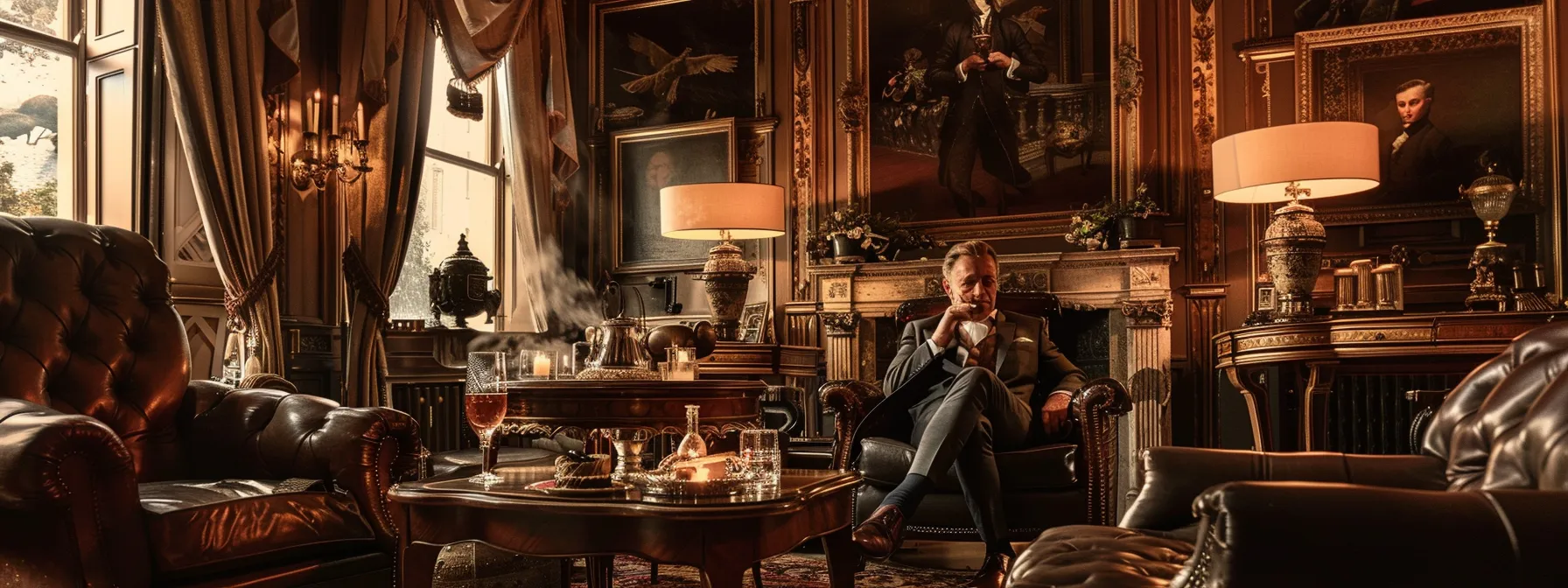
By the 19th century, cigars weren’t just a treat—they were emblems of influence, carried by the powerful and paraded across Europe and America.
This era ignited a cigar boom, marking cigars as the chosen symbol for many historical figures keen on showcasing their status.
Cigars as Emblems of Influence and Power
During the 19th century, cigars became more than a simple indulgence; they emerged as powerful symbols of status and clout.
Political leaders and business moguls frequently were seen with a fine cigar in hand, signaling their elevated position in society.
The sight of a cigar often implied a message, one of success and confidence. It’s no coincidence that cigars featured prominently in the hands of influential figures. The story of cigars in the 19th century is marked by such symbolism:
- Leaders using cigars to project authority.
- Cigars as accessories of the affluent.
- The adoption of cigars in elite circles as a status symbol.
The Cigar Boom in Europe and America
As the 19th century unfolded, cigars ignited a social phenomenon across Europe and America. The air in gentlemen’s clubs was thick with smoke, and having a fine cigar was as crucial to a man’s image as wearing a top hat.
While in Europe, it was a pastime of leisure and conversation; in America, it symbolized the bustling growth of industry and the luxuries it afforded.
Notable Historical Figures and Their Cigar Affinity
Throughout the 19th century, you could find cigars gracing the corners of mouths of some of the most influential figures in history.
These cigars were not just for enjoyment but served as subtle cues of one’s societal stature. From Winston Churchill’s steadfast image with a cigar in his wartime photos to Mark Twain’s known love for the smoke, cigars were synonymous with power and poise:
| Historical Figure | Cigar Affinity | Symbolic Value |
|---|---|---|
| Winston Churchill | Iconic accessory | Resilience and leadership |
| Mark Twain | Frequent indulgence | Intellectual charm |
When you light up a cigar, you’re not just tasting the rich flavors; you’re aligning yourself with a tradition inked deeply into history’s pages.
Consider the sweeping narratives of these individuals whose legacies persist beyond their times, tied intimately with the ritual of cigar smoking. Your choice of cigar threads you into a storied tapestry, previously woven by the hands of greatness.
The Role of Cigars in Social and Business Circles
Back in the 19th century, the soft glow of a cigar in the boardroom wasn’t just about the smoke—it was a savvy social signal, with each puff weaving bonds between moguls and magnates.
In that era’s high society gatherings and hushed meeting rooms, cigars served as both icebreakers and barometers of one’s clout. Today, as you lean back and savor the rich tastes of premium tobacco with fellow enthusiasts, you’re honoring a tradition that’s been polished over time, transforming a simple gathering into a mark of camaraderie and agreement.
Evolution of Cigar Manufacturing: From Handcrafting to Industrialization
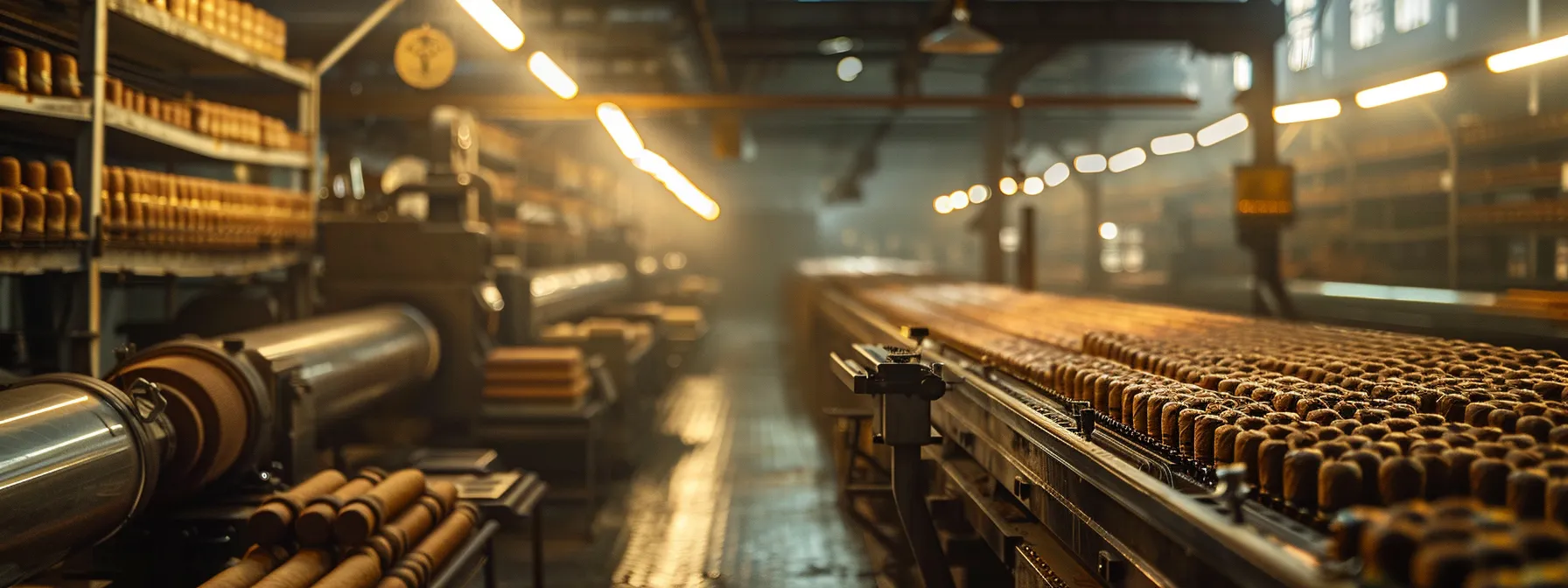
Now, let’s delve into the transformative era of cigar manufacturing—from the meticulous hand-rolling techniques echoing a craft honed by tradition to the introduction of machines that revolutionized production.
You’ll discover how industrialization reshaped cigar quality and quantity, and the pivotal role labor movements played within the industry.
Traditional Hand-Rolling Techniques
Did you know that the age-old technique of hand-rolling cigars is as much a skill as it is an art form? Master rollers, referred to in their communities as ‘torcedores’, begin their craft as apprentices, spending years perfecting their ability to handcraft cigars with precision.
This process, known for its attention to detail, allows each cigar to be created with a unique touch, ensuring a signature draw and flavor profile that machine-produced cigars can’t quite replicate.
The rollers use nothing but a blade, a wooden board, and their expertise to bring to life a product that embodies tradition and culture. Here’s a peek at the core aspects of their technique:
| Aspect | Importance in Hand-Rolling |
|---|---|
| Leaf Selection | Choosing the right leaves determines the flavor and burn quality. |
| Rolling Precision | Ensures a smooth, even draw and an aesthetically pleasing finish. |
| Finishing Touches | Applying caps and bands signifies the mastery and identity of the cigar. |
Introduction of Cigar Rolling Machines
The shift from solely hand-rolled cigars to those created by cigar rolling machines marked a new chapter in tobacco history.
When these machines entered the fray, skilled workers were apprehensive; yet, they quickly became valuable assets, ensuring consistent quality and larger volumes.
| Milestone | Impact on Cigar Industry |
|---|---|
| Advent of Rolling Machines | Streamlined production and consistent cigar quality |
| Wider Accessibility | Cigars become more affordable for a broader audience |
Enthusiasts like you began to enjoy a wider range of options, from the luxury of a time-honored hand-rolled cigar to the everyday pleasure of a machine-made stogie.
Impact of Industrialization on Quality and Production
Industrialization dramatically boosted cigar production, allowing your favorite brands to keep up with the ever-growing demand. With the advent of cigar-rolling machinery, manufacturers were able to ensure each cigar met certain standards of quality and consistency.
Yet, as the gears of industry turned, some worried that the soul of the cigar might be lost. Quality was preserved, to be sure, but for some of you, nothing matches the distinct character of a hand-rolled cigar, where the roller’s personal touch weaves into the smoke‘s very essence.
Cigar Heritage in Art and Literature: Influencing Popular Culture

As you explore the world of cigars, it’s hard not to notice their stamp on art and literature, creating iconic imagery and narratives.
Iconic Cigar Imagery in Art and Advertising
When you stroll through an art gallery or flip through vintage ads, you’re bound to catch the unmistakable presence of cigars.
The enduring persona of cigars in art and advertising reflects the allure of an entire culture, speaking volumes to the connoisseur in you without saying a word.
There’s a certain nostalgia that washes over you as you spot classic cigar imagery in old Hollywood posters or timeless illustrations.
Representation of Cigars in Literary Works
Literary works have often exalted cigars as potent symbols of contemplation and sophistication.
Explore the works of greats like Ernest Hemingway or Mark Twain, and you’ll unearth cigars adding depth to the narrative, almost like silent characters contributing to the storytelling:
- Hemingway’s protagonists often mirror his own fondness for a good cigar, using it as a moment to ponder life’s bigger questions.
- Twain’s works, lace humor and wit with his well-known love for cigars, arguably becoming a hallmark of his literary signature.
As you read and potentially enjoy a smoke yourself, you connect with these timeless characters, comprehending their conflicts and triumphs through the shared ritual of lighting up a cigar.
Cinematic Depictions and the Cigar’s Cultural Symbolism
When you think of cigars in movies, you’re often picturing the archetypal tough guy, a scheming villain, or a group celebrating success.
This is no accident; cigars have grown to symbolize power, contemplation, and triumph in cinema. Every time a character on screen lights up, it’s not just for show—it’s a calculated narrative choice that taps into the legacy of cigars as cultural icons.
Take a moment to recall iconic film scenes where a puff of cigar smoke adds depth to a character or underscores a pivotal moment. It’s in these cinematic instances that you find cigars painting the canvas of storytelling, skillfully used to evoke emotions or portray a lifestyle.
Collecting and Preserving Vintage Cigars
For you, the cigar enthusiast, diving into the realm of vintage cigar collecting is not just about amassing relics; it’s about preserving a piece of smoking history.
Keeping these aged beauties in prime condition means understanding and maintaining the right humidity and temperature in your storage, akin to a museum conservator caring for priceless artifacts. It’s about nurturing an enduring legacy that goes well beyond the smoke.
As you carefully rotate each cigar in your humidor, you’re continuing a practice of conservation that’s been a passion for aficionados through the ages. Remember, it’s not just about the collection; it’s about the connection to cigar heritage and the timeless tales each vintage stogie can tell.
The brush and pen placed cigars in the hands of icons, weaving smoke through the tapestry of our culture’s story. Now, we look forward, to the pulse of modern aficionados shaping the contours of tomorrow’s cigar world.
Preserving the Legacy: Modern Cigar Culture and Future Trends
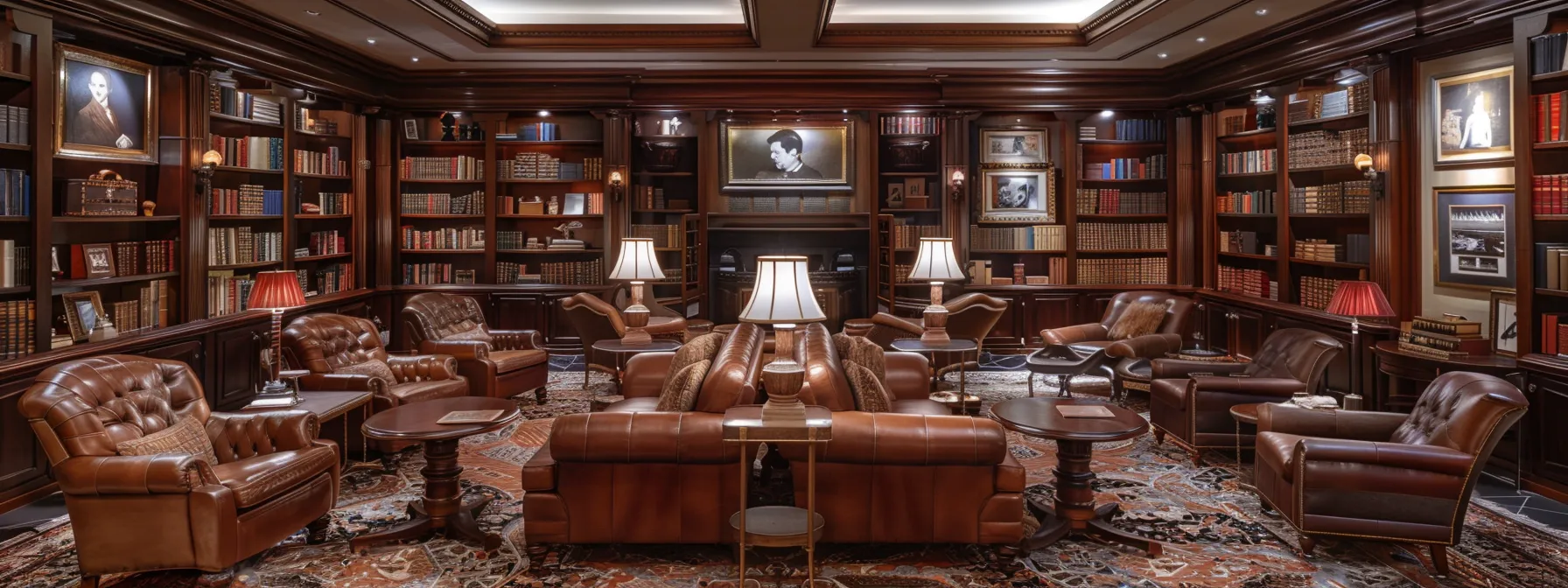
Now, let’s shift our gaze to the present and what lies ahead. Delve into the world where the age-old art of traditional cigar making is experiencing a revival, with heritage brands upholding the strands of historical significance.
Learn more about the blossoming trend of cigar tourism, where exploring historic sites becomes an adventure in itself. Finally, ponder the future possibilities for the cigar heritage in an ever-shifting world, ensuring that the rich legacy endures for generations.
Revival of Traditional Cigar Making Practices
In America and beyond, you’re witnessing a resurgence of traditional cigar making practices where artisans are embracing age-old techniques to craft cigars.
This homage to heritage links you to times when every leaf was a treasure, and every smoke, a tale. As brands blend past and present, they preserve the nuanced flavors and spirit of cigars much like the ones savored by historical figures.
For you, the discerning smoker, this revival is not just about smoking; it’s an authentic experience. Imagine holding a hand-rolled cigar, its wrapper bearing the meticulous attention of a master ‘torcedor’.
This resurgence isn’t merely a nod to tradition – it’s ensuring that the craftsmanship of cigars remains an art form celebrated by a new generation of aficionados.
Heritage Brands Upholding Historical Significance
Heritage cigar brands are treasured keepers of history, shaping the narrative of tobacco with every handcrafted cigar they produce.
They carry the stories of ancient traditions, connecting you to a bygone era through the art of cigar-making. Each premium cigar from these storied brands is a small tribute to a rich legacy, carefully preserved through time-honored methods and an unwavering commitment to craftsmanship.
Engaging with heritage brands offers you more than a mere smoke; it’s a bridge to the past, where each puff is a continuation of a long and storied history.
| Heritage Brand | Signature Craft | Historical Connection |
|---|---|---|
| Montecristo | Hand-rolled excellence | Spanish cigar artistry |
| Romeo y Julieta | Blend of rich flavors | Cuban tobacco legacy |
| Padrón | Family-operated craftsmanship | Nicaraguan tradition |
Cigar Tourism and Exploring Historic Sites
Imagine stepping into the humid, sunlit avenues of a historic cigar plantation, feeling the same warm breeze that once nurtured the world’s most exquisite tobacco leaves.
Cigar tourism invites you to such hallowed grounds, offering a tactile connection to the past. It’s a chance to walk the fields, enter aging rooms rich with the scent of cedar, and possibly even roll a cigar under the guidance of a master torcedor.
If you’ve ever longed to trace the lineage of your favorite smoke, cigar tourism satisfies this curiosity by connecting you with the landmarks that shaped cigar culture. Exploring these places enriches your understanding of cigars beyond the wrapper and filler.
The Future of Cigar Heritage in a Changing World
Peering into the future of cigar heritage, you might wonder how traditions will hold up against the swift currents of change. Innovation in smoking experiences and potential shifts in regulation may reshape how you enjoy cigars, pushing the industry to adapt while keeping the rich history alive.
Your role as an aficionado in shaping this future can’t be overstated. With every purchase and puff, you’re casting a vote for maintaining the depth and luxury that come with a premium cigar. The choices you make today will influence the trends and technologies adopted tomorrow:
- Support for heritage brands sends a strong message about the value of tradition.
- Engagement in cigar communities advocates for the preservation and sharing of cigar culture.
- Exploration of sustainable and ethical practices can drive the industry towards a responsible future.
Conclusion
Tracing the legacy of cigar heritage reveals a rich tapestry of cultural significance, from sacred rituals and symbols of status to the craftsmanship of hand-rolling and the impression left on art and literature.
Whether you’re a seasoned aficionado or just beginning to appreciate the artistry of cigars, embracing this legacy adds depth to every smoking experience. At Premium Cigars of Georgia, we honor this tradition by offering a premium selection of cigars and accessories for enthusiasts at every level.
Visit our shop today or call us at (770) 427-9593 to explore our curated collection and immerse yourself in the heritage of fine tobacco.

